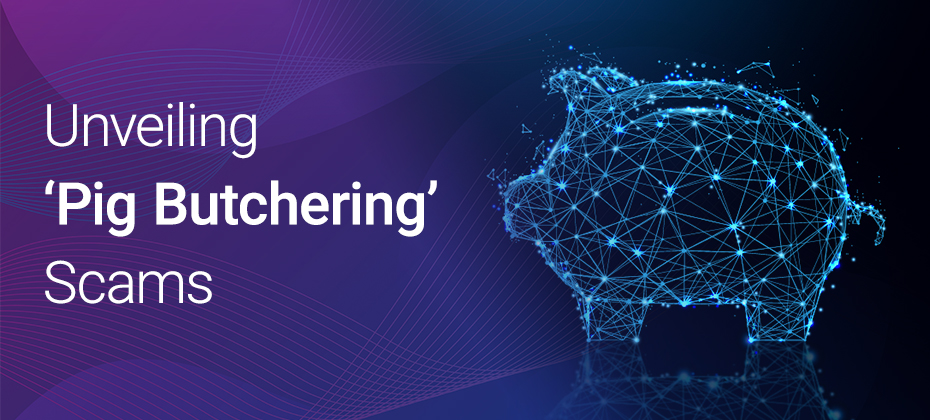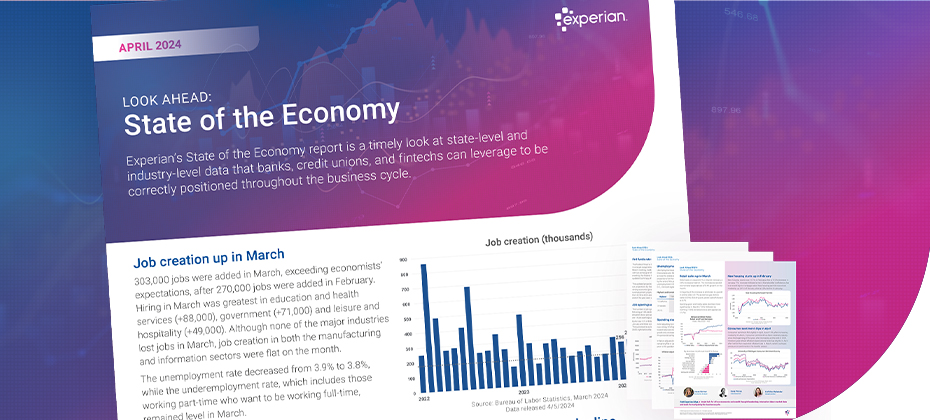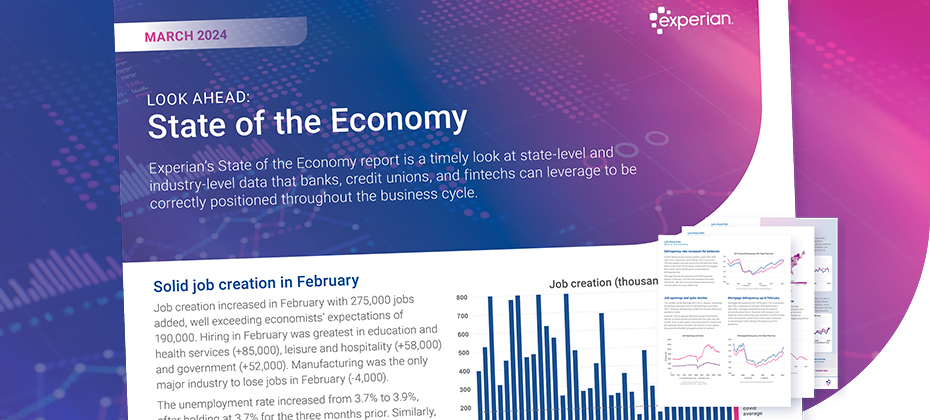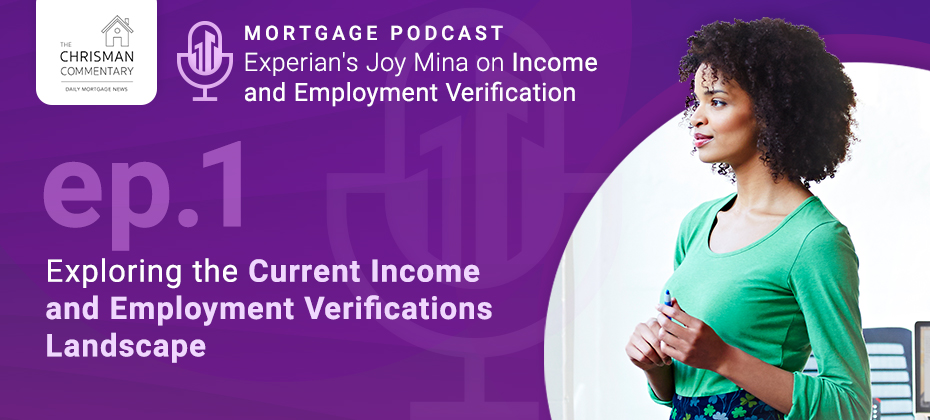Financial Services

With e-commerce booming and more transactions occurring online, the threat of chargeback fraud has never been more significant. In this article, we'll explore chargeback fraud, why it's a growing problem, and, most importantly, how to prevent it. Whether you're a small or large business, understanding and implementing robust chargeback fraud prevention measures is critical to protecting your organization. What is chargeback fraud? Before we can prevent chargeback fraud, we need to know what we're dealing with. A chargeback happens when a cardholder disputes a transaction, or files a chargeback request, leading to the reversal of the payment to the merchant. Chargebacks can occur for various reasons including: Fraudulent transactions: If a card is stolen or its information is used without authorization, like in the case of account takeover fraud or card not present fraud, the cardholder can dispute the charges. Unauthorized transactions: Even if the cardholder didn't lose their card, they might notice charges they didn't make. Quality issues: If the product or service doesn't meet the cardholder's expectations or has a defect, they might dispute the charge. Billing errors: Sometimes, billing mistakes happen, such as being charged multiple times for the same transaction. Subscription cancellations: When a cardholder cancels a subscription but continues to be billed they can dispute the charges. While there are legitimate reasons for chargebacks, chargeback fraud, also known as friendly fraud, occurs when a customer makes a legitimate purchase with their credit card and then disputes the charge by filing a chargeback request. Unlike third-party fraud, where the cardholder's information is stolen or used without permission, in chargeback fraud, the cardholder initiates the dispute to avoid paying for goods or services they legitimately received. Chargeback fraud can take various forms: False claims of non-receipt: The cardholder claims they never received the purchased item, even though they did. Unauthorized transaction claims: The cardholder denies making the purchase, even though they did so legitimately. Product/service dissatisfaction: The cardholder claims dissatisfaction with the product or service as a reason for disputing the charge, even if the product or service was as described. Subscription services: The cardholder signs up for a subscription service and then disputes the recurring charges as unauthorized or unwanted. Why chargeback fraud is on the rise Chargeback fraud is becoming more pervasive for a couple of reasons. First, as e-commerce grows, so does the opportunity for fraud. Without face-to-face interactions, fraudsters can pull off their schemes more easily. Second, the process of issuing chargebacks has become consumer-friendly, with banks often siding with the cardholder without deep scrutiny of the claim. Finally, with the rise of subscription-based services and digital goods, the incidence of "friendly fraud" is increasing. The impact and repercussions of chargeback fraud The impact of chargeback fraud can be felt across several areas within a business. Financially, it's a clear and direct loss. There are also significant operational costs associated with managing chargebacks, including potential product loss, bank and related fees, and administrative work. However, the less tangible, more insidious repercussions involve damage to the business's reputation. A high chargeback rate can lead to a merchant account being suspended or terminated, causing a loss of the ability to process credit card payments. A tarnished reputation can further lead to losing consumer trust, which can be hard to regain. Preventing chargeback fraud Preventing and managing chargeback fraud often involves implementing fraud prevention solutions, providing clear communication and customer support, and disputing illegitimate chargebacks with evidence when possible. Here are key actions you can take to protect your business against chargeback fraud: Educate and communicate with customers: Ensure your customers are fully aware of your return and refund policies. Be clear and transparent in your communications about what happens in the event of a disputed transaction. This can significantly reduce misunderstandings that often lead to legitimate chargebacks. Implement stringent transaction verification processes: Utilize Address Verification Services (AVS) and Card Verification Value (CVV2) verification for online and over-the-phone transactions. These credit card authentication services add an extra layer of security and can establish the validity of a purchase. Keep meticulous records: Document all transactions, including emails, phone calls, and any other purchase-related correspondence. In the event of a dispute, these records can serve as compelling evidence to defend the transaction. Immediate shipment and tracking: Ship products as quickly as possible after purchase and provide tracking information to customers. This delights customers and provides tangible proof of delivery should a chargeback be disputed. Utilize advanced fraud detection tools: Many fraud detection services are available that can instantly flag potentially fraudulent transactions, from monitoring for suspicious spending patterns to IP tracking for online orders. Examples include: Tokenization: Tokenization replaces sensitive card data with a "token," a random string of characters that is useless to fraudsters. This token can be stored or transmitted easily, with the actual payment information securely kept off-site. Machine learning and AI: Machine learning and AI fraud detection solutions can analyze vast amounts of transaction data to detect patterns and anomalies, thus flagging potentially fraudulent activity in real-time. The role of customer support in chargeback prevention While the above tools can help your organization prevent fraudulent charge backs, you likely already have a key tool in your company that can help mitigate chargebacks altogether. Your customer support team is your front line in chargeback prevention. Train them to handle customer inquiries effectively and resolve issues before they escalate. Offer multiple contact channels: Give customers several ways to reach your support team, such as email, phone, and live chat. The more easily they can contact you, the less likely they are to resort to a chargeback. Ensure prompt and courteous service: A positive and responsive customer service experience can turn a potential chargeback into a loyalty-building opportunity. Make refunds and returns as easy as possible for your customers. Additionally, clear and generous policies will reduce dissatisfaction and the likelihood of chargebacks. How we can help Chargeback fraud can be a daunting prospect for any business, but with the right strategies in place, you can protect your business, your customers and your bottom line. Our fraud management solutions provide robust verification options and layered risk management to help reduce the risk of chargeback fraud. Our advanced fraud detection solutions leverage machine learning algorithms and behavioral analytics to confirm the identity of customers during transactions, identify suspicious patterns and activities, and offer deeper insights that enhance fraud prevention strategies. These solutions can help detect potential instances of chargeback fraud in real-time or during post-transaction analysis. Learn more

Financial institutions are constantly searching for ways to engage their consumers while providing valuable services that keep them financially sound and satisfied. At the same time, consumers are looking for ways to limit their risk and grow their financial power while improving and protecting their financial health. Both can be accomplished through personalized financial experiences.

The world of finance can be a dangerous place, where cunning schemes lurk in the shadows, ready to pounce on unsuspecting victims. In the ever-evolving landscape of financial crime, the insidious ‘pig butchering’ scam has emerged as a significant threat, targeting both financial institutions and their clients. What is a ‘pig butchering’ scam? ‘Pig butchering’ scams are named after the practice of farmers fattening up their livestock before “butchering” them. This comparison describes the core of ‘pig butchering’ scams, where criminals entice victims to participate in investment schemes and cryptocurrency fraud. Originating in Southeast Asia and now rampant in the United States, these scams often start with online interactions via social media or dating applications. Scammers build trust with the victim, eventually gaining access to their online accounts. They "fatten the pig" by enticing more cryptocurrency investments and then make off with their ill-gotten gains. The repercussions are staggering, with reported losses exceeding $3.5 billion in 2023 alone according to an AP News article, and around 40,000 victims in the United States, including cases of losses as massive as $4 million. The real-life impact The story of “RB,” a San Francisco man who engaged with a scammer named "Janey Lee," serves as a stark warning. Through social media, Janey orchestrated an elaborate scheme, promising "RB” substantial returns in cryptocurrency investment. Seduced by false promises, “RB” emptied his life savings into the scam, only to be rescued by a Federal Bureau of Investigation (FBI) intervention, narrowly avoiding financial ruin.1 Malicious actors are improving their targeting skills, and often pursue executives and victims with a large sum of money, such as C-level officials from financial institutions. This past February, a $50 million pig slaughtering fraud incident caused the CEO of a local bank in Kansas to lose all his funds and the bank to collapse a few months later. FinCEN's vigilance and updates The Financial Crimes Enforcement Network (FinCEN) remains vigilant, issuing advisories to financial institutions to combat ‘pig butchering’ scams. Their latest advisory highlights evolving scam tactics, including aggressive promotions, using money mules for illegal fund transfers, and leveraging new financial products like decentralized finance (DeFi) platforms to obfuscate transactions. FinCEN also warns about red flags such as large and sudden investments from older customers, quick fund withdrawals after big deposits, and the frequent use of coins or mixers that hide transactions. Financial institutions are encouraged to: Report any suspicious activities by using specific terms like "pig butchering fraud advisory" in their reports to make analysis and response easier. File suspicious activity reports (SARs) using the key term “FIN-2023-PIGBUTCHERING.” Guide potential victims to report to the FBI’s IC3 or the Security and Exchange Commission (SEC’s) reporting system. A call to action for financial institutions The fight against ‘pig butchering’ scams requires proactive measures from financial institutions: Enhance fraud detection and anti-money laundering (AML) programs: Implement robust systems compliant with regulatory guidelines, conduct thorough customer enhanced due diligence, and leverage fraud detection software to spot anomalies and red flags., and leverage fraud detection software to spot anomalies and red flags. Leverage data analytics: Utilize data analytics tools to monitor customer behavior, identify irregular patterns, and swiftly detect potential ‘pig butchering’ activities. Employee training: Educate employees on scam risks, fraud detection techniques, and FinCEN red flags to empower them as the first line of defense., and FinCEN red flags to empower them as the first line of defense. Community education: Educate customers on recognizing and avoiding investment scams, promoting awareness, and safeguarding their assets. Navigating challenges with effective solutions ‘Pig butchering’ scams cause not only money losses but also personal troubles and reputational harm. Awareness, learning, and cooperation are essential in protecting from these complex financial fraudsters, securing the safety and confidence of your institutions and stakeholders. By combining the best data with our automated identification verification processes, you can protect your business and onboard new talents efficiently. Our industry-leading solutions employ device recognition, behavioral biometrics, machine learning, and global fraud databases to spot and block suspicious activity before it becomes a problem. Learn more 1San Francisco Chronical (2023). Crypto Texting Scam *This article includes content created by an AI language model and is intended to provide general information.

This series will dive into our monthly State of the Economy report, providing a snapshot of the top monthly economic and credit data for those in financial services to proactively shape their business strategies. During their March meeting, the Federal Reserve announced no change in the federal funds rate and released their updated Summary of Economic Projects for the remainder of 2024 and 2025. In response to slow but steady cooling inflation, they maintained projections for three rate cuts by the end of 2024. Additionally, they upgraded their growth projections and lowered their unemployment projections, signaling more optimism toward the U.S. economic trajectory. In this month's report, we dive into the data developments that are contributing to this economic story. Data highlights from this month's report include: The Federal Reserve held rates steady and maintained projections for three rate cuts by the end of the year. Inflation progress slowed, with annual headline inflation flat and annual core inflation ticking up from 3.2% to 3.5%. The median rent-to-income ratio increased 4.1% year-over-year to 37.9% nationally. Check out our report for a deep dive into the rest of April's data, including the latest trends in income, originations, and job creation. To have a holistic view of our current environment, we must understand our economic past, present, and future. Check out our annual chartbook for a comprehensive view of the past year and register for our upcoming macroeconomic forecasting webinar for a look at the year ahead. Download April's State of the Economy report Register for webinar For more economic trends and market insights, visit Experian Edge.

Open banking is revolutionizing the financial services industry by encouraging a shift from a closed model to one with greater transparency, competition, and innovation. But what does this mean for financial institutions, and how can you adapt to this new landscape, balancing opportunity against risk? In this article, we will define open banking, illustrate how it operates, and weigh the challenges and benefits for financial institutions. What is open banking? Open banking stands at the forefront of financial innovation, embodying a shift toward a more inclusive, transparent, and consumer-empowered system. At its core, open banking relies on a simple yet powerful premise: it uses consumer-permissioned data to create a networked banking ecosystem that benefits both financial institutions and consumers alike. By having secure, standardized access to consumer financial data — granted willingly by the customers themselves — lenders can gain incredibly accurate insights into consumer behavior, enabling them to personalize services and offers like never before. How does open banking work? Open banking is driven by Application Programming Interfaces (APIs), which are sets of protocols that allow different software components to communicate with each other and share data seamlessly and securely. In the context of open banking, these APIs enable: Account Information Services (AIS): These services allow third-party providers (TPPs) to access account information from financial institutions (with customer consent) to provide budgeting and financial planning services. Payment Initiation Services (PIS): These services permit TPPs to initiate payments on behalf of customers, often offering alternative, faster, or cheaper payment solutions compared to traditional banking methods. Financial institutions must develop and maintain robust and secure APIs that TPPs can integrate with. This requires significant investment in technology and cybersecurity to protect customer data and financial assets. There must also be clear customer consent procedures and data-sharing agreements between financial institutions and TPPs. Benefits of open banking Open banking is poised to create a wave of innovation in the financial sector. One of the most significant benefits is the ability to gain a more comprehensive view of a consumer’s financial situation. With a deeper view of consumer cashflow data and access to actionable insights, you can improve your underwriting strategy, optimize account management and make smarter decisions to safely grow your portfolio. Additionally, open banking promotes financial inclusion by enabling financial institutions to offer more tailored products that suit the needs of previously underserved or unbanked populations. This inclusivity can help bridge the gap in financial services, making them accessible to a broader segment of the population. Furthermore, open banking fosters competition among financial institutions and fintech companies, leading to the development of better products, services, and competitive pricing. This competitive environment not only benefits consumers but also challenges banks to innovate, improve their services, and operate more efficiently. The collaborative nature of open banking encourages an ecosystem where traditional banks and fintech startups co-create innovative open banking solutions. This synergy can accelerate the pace of digital transformation within the banking sector, leading to the development of cutting-edge technologies and platforms that address specific market gaps or consumer demands. Challenges of open banking While open banking presents a plethora of opportunities, its adoption is not without challenges. Financial institutions must grapple with several hurdles to fully leverage the benefits open banking offers. One of the most significant challenges is fraud detection in banking and ensuring data security and privacy. The sharing of financial data through APIs necessitates robust cybersecurity measures to protect sensitive information from breaches and fraud. Banks and TPPs alike must invest in advanced security technologies and protocols to safeguard customer data. Additionally, regulatory compliance poses a considerable challenge. Open banking regulations vary widely across different jurisdictions, requiring banks to adapt their operations to comply with diverse legal frameworks. Staying abreast of evolving regulations and ensuring compliance can be resource-intensive and complex. Furthermore, customer trust and awareness are crucial to the success of open banking. Many consumers are hesitant to share their financial data due to privacy concerns. Educating customers on the benefits of open banking and the measures taken to ensure their data’s security is essential to overcoming this obstacle. Despite these challenges, the strategic implementation of open banking can unlock remarkable opportunities for innovation, efficiency, and service enhancement in the financial sector. Banks that can successfully navigate these hurdles and capitalize on the advantages of open banking are likely to emerge as leaders in the new era of financial services. Our open banking strategy Our newly introduced open banking solution, Cashflow Attributes, powered by Experian’s proprietary data from millions of U.S. consumers, offers unrivaled categorization and valuable consumer insights. The combination of credit and cashflow data empowers lenders with a deeper understanding of consumers. Furthermore, it harnesses our advanced capabilities to categorize 99% of transaction Demand Deposit Account (DDA) and credit card data, guaranteeing dependable inputs for robust risk assessment, targeted marketing and proactive fraud detection. Watch open banking webinar Learn more about Cashflow Attributes

In the previous episode of “The Chrisman Commentary” podcast, Joy Mina, Director of Product Commercialization at Experian, talked about the benefits of a waterfall strategy for income and employment verification. In the latest episode, Joy explores common misconceptions around verifications, such as how a lender needs to put a provider with the most records first in their waterfall. "While that might feel like a sure-fire way to cut costs, it isn't necessarily the most effective," said Joy. "Instead of comparing records, I would really encourage lenders to focus on a provider's total cost to verify a consumer." Listen to the full episode to learn about more misconceptions associated with verifications and what you can do to enhance your strategies. Listen to podcast Learn more

For lenders, first payment default (FPD) is more than just financial jargon; it's a crucial metric in assessing credit risk. This blog post will walk you through the essentials of FPD, from defining the term to exploring how you can prevent and mitigate its potential impact. Understanding first payment default FPD occurs when a consumer fails to make their initial payment on a loan or credit agreement, which is often perceived as an early signal of a potential cascade of risky behavior. Recognizing FPD is the starting point for lenders to address potential issues with new borrowers before they escalate. One important aspect to grasp is the timeline of FPD. It’s not just about missing the first payment; it's about "early" missing. The timing of defaults is often critical in assessing the overall risk profile of a borrower or group of borrowers. The earlier a borrower starts to miss payments, the riskier they tend to be. Examining the causes of FPD The roots of FPD are diverse and can be classified into two broad categories: External factors: These include sudden financial crises, changes in employment status, or unforeseen expenses. Such factors are often beyond the borrower's immediate control. Internal factors: This category covers more deliberate or chronic financial habits, such as overspending, lack of savings, or overleveraging on credit. It's often indicative of longer-term financial instability. Understanding the causes of early payment default is the first step in effective risk management and customer engagement strategies. Implications of FPD for lenders FPD doesn't just signal immediate financial loss for lenders in terms of the missed installment. It sets off a cascade of consequences that affect the bottom line and the reputation of the institution. Financial loss. Lenders incur direct financial losses when a payment is missed, but the implications go beyond the missed payment amount. There are immediate costs associated with servicing, collections, and customer support. In the longer term, repeated defaults can lead to write-offs, impacting the institution's profitability and regulatory standing. Regulatory scrutiny. Repeated instances of FPD can also draw the attention of regulators, leading to scrutiny and potentially increased compliance costs. Mitigating first payment default Mitigating FPD requires a multifaceted approach that blends data, advanced analytics, customer engagement, and agile risk management. Lenders need to adopt strategies that can detect early signs of potential FPD and intervene preemptively. Data-driven decision-making. Leveraging advanced analytics and credit risk modeling is crucial. By incorporating transactional and behavioral data, lenders can make more accurate assessments of a borrower's risk profile. Utilizing predictive models can help forecast which borrowers are likely to default on their first payment, allowing for early intervention. Proactive customer engagement. Initiatives that revolve around education, personalized financial planning advice, and flexible payment arrangements can help borrowers who might be at risk of FPD. Proactive outreach can engage customers before a default occurs, turning a potential negative event into a positive experience. Agile risk management. Risk management strategies should be dynamic and responsive to changing market and customer conditions. Regularly reviewing and updating underwriting criteria, credit policies, and risk assessment tools ensures that lenders are prepared to tackle FPD challenges as they arise. Using FPD as a customer management tool Lastly, and perhaps most importantly, lenders can use FPD as a tool to foster better customer management. Every FPD is a data point that can provide insights into customer behavior and financial trends. By studying the causes and outcomes of FPD, lenders can refine their risk mitigation tools and improve their customer service offerings. Building trust through handling defaults. How lenders handle defaults, specifically the first ones, can significantly impact customer trust. Transparent communication, fair and considerate policies, and supportive customer service can make a difference in retaining customers and improving the lender's brand image. Leveraging data for personalization. The increasing availability of data means lenders can offer more personalized services. By segmenting customers based on payment behavior and response to early interventions, lenders can tailor offerings that meet the specific financial needs and challenges of individual borrowers. How Experian® can help First payment default is a critical aspect of credit risk management that requires attention and proactive strategies. By understanding the causes, implications, and mitigation strategies associated with FPD, financial institutions can not only avoid potential losses but also build stronger, more enduring relationships with their customers. Learn more about Experian’s credit risk modeling solutions. Learn more This article includes content created by an AI language model and is intended to provide general information.

Financial institutions have long relied on anti-money laundering (AML) and anti-fraud systems to protect themselves and their customers. These departments and systems have historically operated in siloes, but that’s no longer best practice. Now, a new framework that integrates fraud and AML, or FRAML, is taking hold as financial institutions see the value of sharing resources to fight fraud and other financial crimes. You don’t need to keep them separated For fraudsters, fraud and money laundering go hand-in-hand. By definition, someone opening an account and laundering money is committing a crime. The laundered funds are also often from illegal activity — otherwise, they wouldn’t need to be laundered. For financial institutions, different departments have historically owned AML and anti-fraud programs. In part, because AML and fraud prevention have different goals: AML is about staying compliant: AML is often owned by an organization’s compliance department, which ensures the proper processes and reporting are in place to comply with relevant regulations. Fraud is about avoiding losses: The fraud department identifies and stops fraudulent activity to help protect the organization from reputational harm and fraud losses. As fraudsters’ operations become more complex, the traditional separation of the two departments may be doing more harm than good. Common areas of focus There has always been some overlap in AML and fraud prevention. After all, an AML program can stop criminals from opening or using accounts that could lead to fraud losses. And fraud departments might stop suspicious activity that’s a criminal placing or layering funds. While AML and fraud both involve ongoing account monitoring, let’s take a closer look at similarities during the account creation: Verifying identities: Financial institutions’ AML programs must include know your customer (KYC) procedures and a Customer Identification Program (CIP). Being able to verify the identity of a new customer can be important for tracing transactions back to an individual or entity later. Similarly, fraud departments want to be sure there aren’t any red flags when opening a new account, such as a connection between the person or entity and previous fraudulent activity. Preventing synthetic identity fraud: Criminals may try to use synthetic identities to avoid triggering AML or fraud checks. Synthetic identity fraud has been a growing problem, but the latest solutions and tools can help financial institutions stop synthetic identity fraud across the customer lifecycle. Detecting money mules: Some criminals recruit money mules rather than using their own identity or creating a synthetic identity. The mules are paid to use their legitimate bank account to accept and transfer funds on behalf of the criminal. In some cases, the mule is an unwitting victim of a scam and an accomplice in money laundering. Although the exact requirements, tools, processes, and reports for AML and fraud differ, there’s certainly one commonality — identify and stop bad actors. Interactive infographic: Building a multilayered fraud and identity strategy The win-win of the FRAML approach Aligning AML and fraud could lead to cost savings and benefits for the organization and its customers in many ways. Save on IT costs: Fraud and AML teams may benefit from similar types of advanced analytics for detecting suspicious activity. In 2023, around 60 percent of businesses were using or trying to use machine learning (ML) in their fraud strategies, but a quarter said cost was impeding implementation.1 If fraud and AML can share IT resources and assets, they might be able to better afford the latest ML and AI solutions. Avoid duplicate work: Cost savings can also happen if you can avoid having separate AML and fraud investigations into the same case. The diverse backgrounds and approaches to investigations may also lead to more efficient and successful outcomes. Get a holistic view of customers: Sharing information about customers and accounts also might help you more accurately assess risk and identify fraud groups. Improve your customer experience: Shared data can also reduce customer outreach for identity or transaction verifications. Creating a single view of each account or customer can also improve customer onboarding and account monitoring, leading to fewer false positives and a better customer experience. Some financial institutions have implemented collaboration with the creation of a new team, sometimes called the financial crimes unit (FCU). Others may keep the departments separate but develop systems for sharing data and resources. Watch the webinar: Fraud and identity challenges for Fintechs How Experian can help Creating new systems and changing company culture doesn’t happen overnight, but the shift toward collaboration may be one of the big trends in AML and fraud for 2024. As a leader in identity verification and fraud prevention, Experian can offer the tools and strategies that organizations need to update their AML and fraud processes across the entire customer lifecycle. CrossCore® is our integrated digital identity and fraud risk platform which enables organizations to connect, access, and orchestrate decisions that leverage multiple data sources and services. CrossCore cloud platform combines risk-based authentication, identity proofing and fraud detection, which enables organizations to streamline processes and quickly respond to an ever-changing environment. In its 2023 Fraud Reduction Intelligence Platforms (FRIP), Kuppinger Cole wrote, “Once again, Experian is a Leader in Fraud Reduction Intelligence Platforms. Any organizations looking for a full-featured FRIP service with global support should consider Experian CrossCore.” Learn more about Experian’s AML and fraud solutions. 1. Experian (2023). Experian's 2023 Identity and Fraud Report

Know Your Customer (KYC) procedures are a requirement for banks and other financial institutions to collect and verify the identity of their customers. When a bank verifies the identity of another organization or its owners, the process may be called Know Your Business (KYB) instead. As part of banks’ anti-money laundering (AML) programs, KYC can help stop corruption, money laundering and terrorist financing. Creating and maintaining KYC programs is also important for regulatory compliance, reputation management and fraud prevention. READ: How to Build a Know Your Customer Checklist – Everything You Need to Know The three components of KYC programs Banks can largely determine how to set up their KYC and AML programs within the applicable regulatory guidelines. In the United States, KYC needs to happen when banks initially onboard a new customer. But it’s not a one-and-done event—ongoing customer and transaction monitoring is also important. Customer Identification Program (CIP) Creating a robust Customer Identification Program (CIP) is an essential part of KYC. At a minimum, a bank’s CIP requires it to collect the following information from new customers: Name Date of birth Address Identification number, such as a Social Security number (SSN) or Employer Identification Number (EIN) Banks' CIPs also have to use risk-based procedures to verify customers’ identities and form a reasonable belief that they know the customer's true identity.1 This might involve comparing the information from the application to the customer’s government-issued ID, other identifying documents and authoritative data sources, such as credit bureau databases. Additionally, the bank's CIP will govern how the bank: Retains the customer’s identifying information Compares customer to government lists Provides customers with adequate notices Banks can create CIPs that meet all the requirements in various ways, and many use third-party solutions to quickly collect data, detect forged or falsified documents and verify the provided information. INFOGRAPHIC: Streamlining the Digital Onboarding Process: Beating Fraud at its Game Customer due diligence (CDD) CIP and CDD overlap, but the CIP primarily verifies a customer’s identity while customer due diligence (CDD) helps banks understand the risk that each customer poses. To do this, banks try to understand what various types of customers do, what those customers’ normal banking activity looks like, and in contrast, what could be unusual or suspicious activity. Financial institutions can use risk ratings and scores to evaluate customers and then use simplified, standard or enhanced due diligence (EDD) processes based on the results. For example, customers who might pose a greater risk of laundering money or financing terrorism may need to undergo additional screenings and clarify the source of their funds. Ongoing monitoring Ongoing or continuous monitoring of customers’ identities and transactions is also important for staying compliant with AML regulations and stopping fraud. The monitoring can help banks spot a significant change in the identity of the customer, beneficial owner or account, which may require a new KYC check. Unusual transactions can also be a sign of money laundering or fraud, and they may require the bank to file a suspicious activity report (SAR). Why is KYC important in banking? Understanding and implementing KYC processes can be important for several reasons: Regulatory compliance: Although the specific laws and rules can vary by country or region, many banks are required to have AML procedures, including KYC. The fines for violating AML regulations can be in the hundreds of millions— a few banks have been fined over $1 billion for lax AML enforcement and sanctions breaching. Reputation management: In some cases, enforcement actions and fines were headline news. Banks that don’t have robust KYC procedures in place risk losing their customers' trust and respect. Fraud prevention: In addition to the regulatory requirements, KYC policies and systems can also work alongside fraud management solutions for banks. Identity verification at onboarding can help banks identify synthetic identities attempting to open money mule accounts or take out loans. Ongoing monitoring can also be important for identifying long-term fraud schemes and large fraud rings. ON-DEMAND WEBINAR: Fraud Strategies for a Positive Customer Experience KYC in a digital-first world Many financial institutions have been going through digital transformations. Part of that journey is updating the systems and tools in place to meet the expectations of customers and regulators. An Experian survey found that about half of consumers (51 percent) consider abandoning the creation of a new account because of friction or a less-than-positive experience — that increased to 69 percent for high-income households.2 The survey wasn’t specific to financial services, but friction could be a problem for banks wanting to attract new account holders. Just as access to additional data sources and machine learning help automate underwriting, financial institutions can use technological advances to add an appropriate amount of friction based on various risk signals. Some of these can be run in the background, such as an electronic Consent Based Social Security Number Verification (eCBSV) check to verify the customer’s name, SSN and date of birth match the Social Security Administration’s records. Others may require more customer involvement, such as taking a selfie that’s then compared to the image on their photo ID — Experian CrossCore® Doc Capture enables this type of verification. Experian is a leader in identity and data management Experian's identity verification solutions use proprietary and third-party data to help banks manage their KYC procedures, including identity verification and Customer Identification Programs. By bundling identity verification with fraud assessment, banks can stop fraudsters while quickly resolving identity discrepancies. The automated processes also allow you to offer a low-friction identity verification experience and use step-up authentications as needed. Learn more about Experian’s identity solutions. 1FDIC (2021). Customer Identification Program 2Experian (2023). Experian's 2023 Identity and Fraud Report

This series will dive into our monthly State of the Economy report, providing a snapshot of the top monthly economic and credit data for those in financial services to proactively shape their business strategies. As we near the end of the first quarter, the U.S. economy has maintained its solid standing. We're also starting to see some easing in a few areas. This month saw a slight uptick in unemployment, slowed spending growth, and a slight increase in annual headline inflation. At the same time, job creation was robust, incomes continued to grow, and annual core inflation cooled. In light of the mixed economic landscape, this month’s upcoming Federal Reserve meeting and their refreshed Summary of Economic Projections should shine some light on what’s in store in the coming months. Data highlights from this month’s report include: Annual headline inflation increased from 3.1% to 3.2%, while annual core inflation cooled from 3.9% to 3.8%. Job creation remained solid, with 275,000 jobs added this month. Unemployment increased to 3.9% from 3.7% three months prior. Mortgage delinquencies rose for accounts (2.3%) and balances (1.8%) in February, contributing to overall delinquencies across product types. Check out our report for a deep dive into the rest of March’s data, including consumer spending, the housing market, and originations. To have a holistic view of our current environment, we must understand our economic past, present, and future. Check out our annual chartbook for a comprehensive view of the past year and download our latest forecasting report for a look at the year ahead. Download March's State of the Economy report Download latest forecast For more economic trends and market insights, visit Experian Edge.

To say “yes” to consumers faster and more efficiently, financial institutions need flexible access to instant income and employment verification data. In an episode of “The Chrisman Commentary” podcast, Joy Mina, Director of Product Commercialization at Experian, talks about how income and employment verification has changed since Experian entered the market, the benefits of a waterfall strategy, and what’s next in our verifications journey. “Back then, we were hearing lenders primarily asking for more innovative solutions,” said Joy. “They wanted more flexibility without sacrificing quality of service.” Listen to the full episode to learn more about what lenders look for in an income and employment verification solution and how Experian VerifyTM is meeting these needs. Listen to podcast Learn more

This article was updated on March 11, 2024. As a lender, it’s important to understand a consumer’s credit behavior and whether it's improving or deteriorating over time. Sure, you can pull a credit score at any moment, but it's merely a snapshot. Knowing a consumer’s credit information at a single point in time only tells part of the story. Two consumers can have the same credit score, but one consumer’s score could be moving up while another’s score could be moving down. To understand the whole story, lenders need the ability to leverage trended data to assess a consumer’s credit behavior over time. What to know about trended data Trended data provides key balance and payment data for the previous 24 months. By analyzing historical payment information, lenders can determine if a consumer is consistently paying more than the minimum payment, has a demonstrated ability to pay, and shows no signs of payment stress. It can conversely identify if a consumer is making only minimum payments and has increasing payment stress. Experian’s Trended Data is comprised of five fields of historical payment information over a 24-month period. It includes: Balance Amount Original Loan / Limit Amount Scheduled Payment Amount Actual Payment Amount Last Payment Date Knowing how a consumer uses credit, or pays back debt over time, can help lenders offer the right products and terms to increase response rates, determine up-sell and cross-sell opportunities, and limit loss exposure. Using a consumer’s historical payment information also provides a more accurate assessment of future behavior, helping lenders effectively manage changes in risk, predict balance transfer activity, and prevent attrition. The challenge For lenders to extract the benefits of trended data, they need to analyze an enormous amount of data. Five fields of data across 24 months on every trade is huge and can be difficult for lenders with limited analytical resources to manage. For example, a single consumer with 10 trades on file would have upwards of 1,200 data points to analyze. Multiply that by a file of 100,000 consumers and you are now dealing with over 120,000,000 data points. Additionally, if lenders utilize the trended data in their underwriting processing and intend to use it to decline consumers, they need to create their own adverse action reason codes to communicate to the consumer. Not all lenders are equipped to take on this level of effort. Still, there are trended data solutions to assist lenders with managing and unlocking the power of trended data. How Experian can help Experian’s pre-calculated solutions allow even the smallest lenders to quickly and effectively action on the benefits of trended data, minus the hassles of analyzing it. Trended data, and the solutions built from it, allow lenders to effectively predict where a consumer is going based on where they’ve been. And really, that can make all the difference when it comes to smart lending decisions. Get started today

In the ever-expanding financial crime landscape, envision the most recent perpetrator targeting your organization. Did you catch them? Could you recover the stolen funds? Now, picture that same individual attempting to replicate their scheme at another establishment, only to be thwarted by an advanced system flagging their activity. The reason? Both companies are part of an anti-fraud data consortium, safeguarding financial institutions (FIs) from recurring fraud. In the relentless battle against fraud and financial crime, FIs find themselves at a significant disadvantage due to stringent regulations governing their operations. Criminals, however, operate without boundaries, collaborating across jurisdictions and international borders. Recognizing the need to level the playing field, FIs are increasingly turning to collaborative solutions, such as participation in fraud consortiums, to enhance their anti-fraud and Anti-Money Laundering (AML) efforts. Understanding consortium data for fraud prevention A fraud consortium is a strategic alliance of financial institutions and service providers united in the common goal of comprehensively understanding and combatting fraud. As online transactions surge, so does the risk of fraudulent activities. However, according to Experian’s 2023 U.S. Identity and Fraud Report, 55% of U.S. consumers reported setting up a new account in the last six months despite concerns around fraud and online security. The highest account openings were reported for streaming services (43%), social media sites and applications (40%), and payment system providers (39%). Organizations grappling with fraud turn to consortium data as a robust defense mechanism against evolving fraud strategies. Consortium data for fraud prevention involves sharing transaction data and information among a coalition of similar businesses. This collaborative approach empowers companies with enhanced data analytics and insights, bolstering their ability to combat fraudulent activities effectively. The logic is simple: the more transaction data available for analysis by artificial-intelligence-powered systems, the more adept they become at detecting and preventing fraud by identifying patterns and anomalies. Advantages of data consortiums for fraud and AML teams Participation in an anti-fraud data consortium provides numerous advantages for a financial institution's risk management team. Key benefits include: Case management resolution: Members can exchange detailed case studies, sharing insights on how they responded to specific suspicious activities and financial crime incidents. This collaborative approach facilitates the development of best practices for incident handling. Perpetrator IDs: Identifying repeat offenders becomes more efficient as consortium members share data on suspicious activities. Recognizing patterns in names, addresses, device fingerprints, and other identifiers enables proactive prevention of financial crimes. Fraud trends: Consortium members can collectively analyze and share data on the frequency of various fraud attempts, allowing for the calibration of anti-fraud systems to effectively combat prevalent types of fraud. Regulatory changes: Staying ahead of evolving financial regulations is critical. Consortiums enable FIs to promptly share updates on regulatory changes, ensuring quick modifications to anti-fraud/AML systems for ongoing compliance. Who should join a fraud consortium? A fraud consortium can benefit any organization that faces fraud risks and challenges, especially in the financial industry. However, some organizations may benefit more, depending on their size, type, and fraud exposure. Some of the organizations that should consider joining a fraud consortium are: Financial institutions: Banks, credit unions, and other financial institutions are prime targets for fraudsters, who use various methods such as identity theft, account takeover, card fraud, wire fraud, and loan fraud to steal money and information from them. Fintech companies: Fintech companies are innovative and disruptive players in the financial industry, who offer new and alternative products and services such as digital payments, peer-to-peer lending, crowdfunding, and robot-advisors. Online merchants: Online merchants are vulnerable to fraudsters, who use various methods such as card-not-present fraud, friendly fraud, and chargeback fraud to exploit their online transactions and payment systems. Why partner with Experian? What companies need is a consortium that allows FIs to collaboratively research anti-fraud and AML information, eliminating the need for redundant individual efforts. This approach promotes tighter standardization of anti-crime procedures, expedited deployment of effective anti-fraud/AML solutions, and a proactive focus on preventing financial crime rather than reacting to its aftermath. Experian Hunter is a sophisticated global application fraud and risk management solution. It leverages detection rules to screen incoming application data for identifying and preventing fraudulent activities. It matches incoming application data against multiple internal and external data sources, shared fraud databases and dedicated watch lists. It uses client-flexible matching rules to crossmatch data sources for highlighting data anomalies and velocity attempts. In addition, it looks for connections to previous suspected and known fraudulent applications. Hunter generates a fraud score to indicate a fraud risk level used to prioritize referrals. Suspicious applications are moved into the case management tool for further investigation. Overall, Hunter prevents application fraud by highlighting suspicious applications, allowing you to investigate and prevent fraud without inconveniencing genuine customers. To learn more about our fraud management solutions, visit us online or request a call. Learn more This article includes content created by an AI language model and is intended to provide general information.

This article was updated on March 7, 2024. Like so many government agencies, the U.S. military is a source of many acronyms. Okay, maybe a few less, but there really is a host of abbreviations and acronyms attached to the military – and in the regulatory and compliance space, that includes SCRA and MLA. So, what is the difference between the two? And what do financial institutions need to know about them? Let’s break it down in this basic Q&A. SCRA and MLA: Who is covered and when are they covered? The Servicemember Civil Relief Act (SCRA) protects service members and their dependents (indirectly) on existing debts when the service member becomes active duty. In contrast, the Military Lending Act (MLA) protects service members, their spouses and/or covered dependents at point of origination if they are on active duty at that time. For example, if a service member opens an account with a financial institution and then becomes active military, SCRA protections will apply. On the other hand, if the service member is of active duty status when the service member or dependent is extended credit, then MLA protections will apply. Both SCRA and MLA protections cease to apply to a credit transaction when the service member ceases to be on active duty status. What is covered? MLA protections apply to all forms of payday loans, vehicle title loans, refund anticipation loans, deposit advance loans, installment loans, unsecured open-end lines of credit, and credit cards. However, MLA protections exclude loans secured by real estate and purchase-money loans, including a loan to finance the purchase of a vehicle. What are the interest rate limitations for SCRA and MLA? The SCRA caps interest rate charges, including late fees and other transaction fees, at 6 percent. The MLA limits interest rates and fees to 36 percent Military Annual Percentage Rate (MAPR). The MAPR is not just the interest rate on the loan, but also includes additional fees and charges including: Credit insurance premiums/fees Debt cancellation contract fees Debt suspension agreement fees and Fees associated with ancillary products. Although closed-end credit MAPR will be a one-time calculation, open-end credit transactions will need to be calculated for each covered billing cycle to affirm lender compliance with interest rate limitations. Are there any lender disclosure requirements? There is only one set of circumstances that triggers SCRA disclosures. The Department of Housing and Urban Development (HUD) requires that SCRA disclosures be provided by mortgage servicers on mortgages at 45 days of delinquency. This disclosure must be provided in written format only. For MLA compliance, financial institutions must provide the following disclosures: MAPR statement Payment obligation descriptions Other applicable Regulation Z disclosures. For MLA, it is also important to note that disclosures are required both orally and in a written format the borrower can keep. How Experian can help Experian's solutions help you comply with the Department of Defense's (DOD's) final amendment rule. We can access the DOD's database on your behalf to identify MLA-covered borrowers and provide a safe harbor for creditors ascertaining whether a consumer is covered by the final rule's protection. Visit us online to learn more about our SCRA and military lending act compliance solutions. Learn more

Finding a reliable, customer-friendly way to protect your business against new account fraud is vital to surviving in today's digital-driven economy. Not only can ignoring the problem cause you to lose valuable money and client goodwill, but implementing the wrong solutions can lead to onboarding issues that drive away potential customers. The Experian® Identity and Fraud Report revealed that nearly 60 percent of U.S. businesses reported higher fraud losses in 2025, with many of these involving new account fraud. At the same time, problems with onboarding caused 52 percent of consumers to drop off and take their business elsewhere. In other words, your customers want protection, but they aren't willing to compromise their digital experience to get it. You need to find a way to meet both these needs when combating new account fraud. What is new account fraud? New account fraud occurs any time a bad actor creates an account in your system utilizing a fake or stolen identity. This process is referred to by different names, such as account takeover fraud, account creation fraud, or account opening fraud. Examples of some of the more common types of new account fraud include: Synthetic identity (ID) fraud: This type of fraud occurs when the scammer uses a real, stolen credential combined with fake credentials. For example, they might use someone's real Social Security number combined with a fake email. Identity theft: In this case, the fraudster uses personal information they stole to create a new scam account. Fake identity: With this type of fraud, scammers create an account with wholly fake credentials that haven't been stolen from any particular person. New account fraud may target individuals, but the repercussions spill over to impact entire organizations. In fact, many scammers utilize bots to attempt to steal information or create fake accounts en masse, upping the stakes even more. How does new account fraud work? New account fraud begins at a single weak security point, such as: Data breaches: A survey revealed that 61% of Americans have received at least one data breach notification in the past two years.1 Phishing scams: The fraudster creates an email or social media account that pretends to be from a legitimate organization or person to gain confidential information.2 Skimmers: These are put on ATMs or fuel pumps to steal credit or debit card information.2 Bot scrapers: These tools scrape information posted publicly on social media or on websites.2 Synthetic ID fraud: 80 percent of new account fraud is linked to synthetic ID fraud.3 The scammer just needs one piece of legitimate information. If they have a real Social Security number, they might combine it with a fake name and birth date (or vice versa.) After the information is stolen, the rest of the fraud takes place in steps. The fake or stolen identity might first be used to open a new account, like a credit card or a demand deposit account. Over time, the account establishes a credit history until it can be used for higher-value targets, like loans and bank withdrawals. How can organizations prevent new account fraud? Some traditional methods used to combat new account fraud include: Completely Automated Public Turing Tests (CAPTCHAs): These tests help reduce bot attacks that lead to data breaches and ensure that individuals logging into your system are actual people. Multifactor authentication (MFA): MFA bolsters users' password protection and helps guard against account takeover. If a scammer tries to take over an account, they won't be able to complete the process. Password protection: Robust password managers can help ensure that one stolen password doesn't lead to multiple breaches. Knowledge-based authentication: Knowledge-based authentication can be combined with MFA solutions, providing an additional layer of identity verification. Know-your-customer (KYC) solutions: Businesses may utilize KYC to verify customers via government IDs, background checks, ongoing monitoring, and the like. Additional protective measures may involve more robust identity verification behind the scenes. Examples include biometric verification, government ID authentication, public records analysis, and more. Unfortunately, these traditional protective measures may not be enough, for many reasons: New account fraud is frequently being perpetrated by bots, which can be tougher to keep up with and might overwhelm systems. Institutions might use multiple security solutions that aren't built to work together, leading to overlap and inefficiency. Security measures may create so much friction in the account creation process that potential new customers are turned away. How we can help Experian's fraud management services provide a multi-layered approach that lets businesses customize solutions to their particular needs. Advanced machine learning analytics utilizes extensive, proprietary data to provide a unique experience that not only protects your company, but it also protects your customers' experience. Customer identification program (CIP): Experian's KYC solutions allow you to confidently identify your customers via a low-friction experience. The tools start with onboarding, but continue throughout the customer journey, including portfolio management. The tools also help your company comply with relevant KYC regulations. Cross-industry analysis of identity behavior: Experian has created an identity graph that aggregates consumer information in a way that gives companies access to a cross-industry view of identity behavior as it changes over time. This means that when a new account is opened, your company can determine behind the scenes if any part of the identity is connected to instances of fraud or presents actions not normally associated with the customer's identity. It's essentially a new paradigm that works faster behind the scenes and is part of Experian's Ascend Fraud Platform™. Multifactor authentication solutions: Experian's MFA solutions utilize low-friction techniques like two-factor authentication, knowledge-based authentication, and unique one-time password authentication during remote transactions to guard against hacking. Synthetic ID fraud protection: Experian's fraud management solutions include robust protection against synthetic ID fraud. Our groundbreaking technology detects and predicts synthetic identities throughout the customer lifecycle, utilizing advanced analytics capabilities. CrossCore®: CrossCore combines risk-based authentication, identity proofing, and fraud detection into one cloud platform, allowing for real-time decisions to be made with flexible decisioning workflows and advanced analytics. Precise ID®: The Precise ID platform lets customers choose the combination of fraud analytics, identification verification, and workflows that best meet their business needs. This includes machine-learned fraud risk models, robust consumer data assets, one-time passwords (OTPs), knowledge-based authentication (KBAs), and powerful insights via the Identity Element Network®. Interactive infographic: Building a multilayered fraud and identity strategy Account takeover fraud represents a significant threat to your business that you can't ignore. But with Experian's broad range of solutions, you can keep your systems secure while not sacrificing customer experience. Experian can keep your business secure from new account fraud Experian's innovative approach can streamline your new account fraud protection. Learn more about how our fraud management solutions can help you. Learn more References 1. https://www.prnewswire.com/news-releases/americans-are-on-high-alert-as-data-breach-fears-reach-a-breaking-point-302392550.html 2. "Identity Theft." USA.gov, December 6, 2023. https://www.usa.gov/identity-theft 3. Purcell, Michael. "Synthetic Identity Fraud: What is It and How to Combat It." Thomson Reuters, April 28, 2023. https://legal.thomsonreuters.com/blog/synthetic-identity-fraud-what-is-it-and-how-to-combat-it/